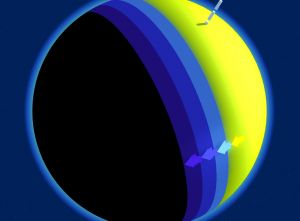When Does Shabbat End?
There are a number of different positions regarding what is the amount of time that exists between sunset late Shabbat afternoon and when Shabbat ends.
Introduction
The Shulchan Aruch is of the opinion that Shabbat ends when one is able to see three small stars in the sky that are close in proximity to one another [1]. This is the widely accepted definition of when Shabbat ends, though there are a variety of opinions as to when this phenomenon actually occurs in a way that is halachically significant enough to end Shabbat. Most of these opinions can be subcategorized in one of two major methods of calculation: an astronomical based method or a time based method.
The Astronomical Method (Rav Tukachinsky)
According to this position, anything that is stipulated in the Gemara about the amount of time between sunset and the emergence of three stars in the sky is only applicable to Bavel (Babylonia) and Israel during the Tishrei and Nissan equinoxes, not for the rest of the world nor during the rest of the year. The astronomical method uses the time that it takes to see the three small stars in Israel and the position of the sun at the above mentioned times to extrapolate a calculation for when Shabbat should end for the rest of the world. In Jerusalem, during the Tishrei and Nissan equinoxes, it takes approximately 36 minutes after sunset to see these three stars in the sky. At this time, the sun has set 8.5 degrees below the horizon. Therefore, Shabbat ends when the sun has set 8.5 degrees below the horizon in every other location in the world at any other time during the year. [2][3]
In light of this determination, the amount of time after sunset when Shabbat will end will vary from place to place and is not uniform.
The Time Based Method
Besides for the astronomical method mentioned above, there are many of the opinion that Shabbat ends at an uniform increment of time after sunset in every region of the world.
- There are poskim that made such positions for Israel specifically. The more lenient positions held that Shabbat ends 24 minutes after sunset in the winter and 30 in the summer in Israel.[4] Those who were more stringent held that Shabbat should end 45-50 minutes after sunset in Israel.[5]
- According to Sephardim, a Yireh Shamayim should be strict to refrain from Melacha until 72 minutes after sunset like Rabbenu Tam.[6] These 72 minutes are proportional to the length of the day, and do not depend on current location.[7]
- According to Sephardim, it is permitted for someone who keeps Rabbenu Tam time to ask someone who doesn't keep Rabbenu Tam time to do Melacha for him.[8]
Sources
- ↑ Shulchan Aruch O.C. 293:2 The Bei'ur Halacha (ibid.) is of the opinion that even Rabbeinu Tam, who holds that Shabbat should end 72 minutes after sunset (the time it takes to walk 4 mil), would concede that if three small stars in close proximity to each other are visible, Shabbat is over even if 72 minutes have not yet elapsed. This is in contrast to Rav Ovadiah Yosef (Shu"t Yabia Omer 2:21) and the Orot HaChaim's opinion that Rabbeinu Tam and Shulchan Aruch are really stating the same position. The Orot HaChaim explains that the stars being mentioned in the Shulchan Aruch are ones that are closer to the western horizon where the sun sets, which apparently take longer to become visible.
- ↑ Rabbi Yechiel Michel Tukachinsky, Sefer Bein HaShemashot. Berur Halacha (Zilber) Tinyana Siman.
- Zmanim KHalacha p. 43 quotes Hacham Ovadia as holding that the minutes for Olot do not depend on location but rather shaot zmaniyot. Rabbi Yehuda Levi, author of Zmanim KHalacha, argues with Hacham Ovadia on the same page. He writes that the 72 minutes are not calculated based on the shaot zmaniot and do depend on current location. Rabbi Levi's difficulties stem from the Rambam's language and astronomic calculation. In the Berachot (1:1), Rambam uses a unique Arabic term when referring to alot hashachar, one that is not used in reference to zman Kriyat Shema (Berachot 1:5) or a the time of a mil (Pesachim 3:2). Furthermore, in the winter, it starts to become light earlier than it starts to become light the spring and the fall, despite having shorter shaot zmaniot in the winter; given this reality, it is difficult to justify calculating alot hashachar strictly according to shaot zmaniot. Therefore, Rabbi Levi maintains that alot hashachar's calculation is determined by degrees below the horizon.
- ↑ In the New York area, this usually takes approximately 40 minutes after sunset at the equinox, and as much as 51 minutes during the summer.
- ↑ Ketzot HaChoshen 93:2
- ↑ Dinim V'Hanhagot 8:7 in the name of the Chazon Ish. Rav Aharon M'Belz instructed that one should wait 50 minutes after sunset in Israel.
- ↑ Yalkut Yosef 293:3
- ↑ Zmanim KHalacha, page 43, quoting Hacham Ovadia zt"l. Hence, 72 minutes would be 1.2 multiplied by the day's shaa zmanit.
- ↑ Yalkut Yosef 293:11
